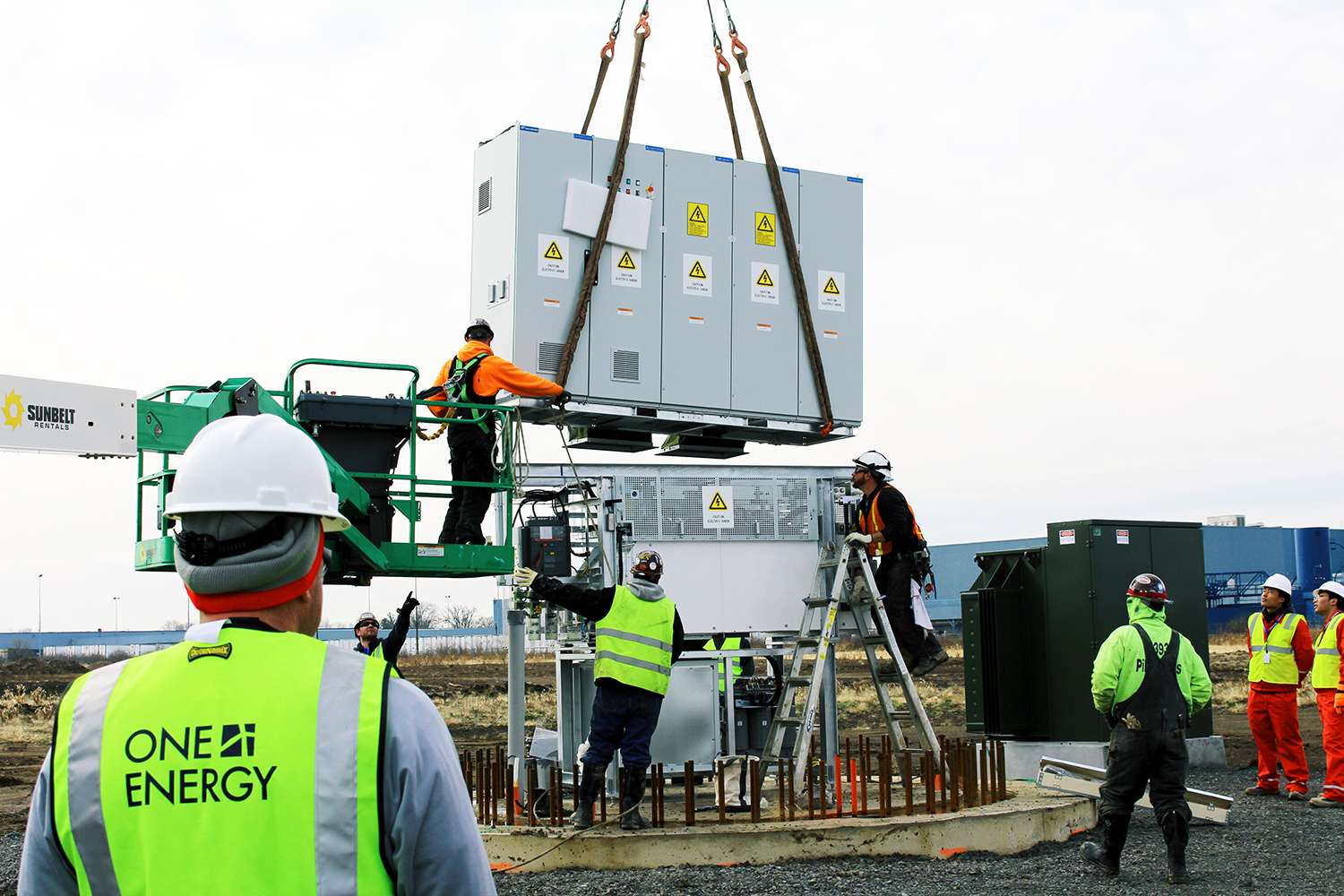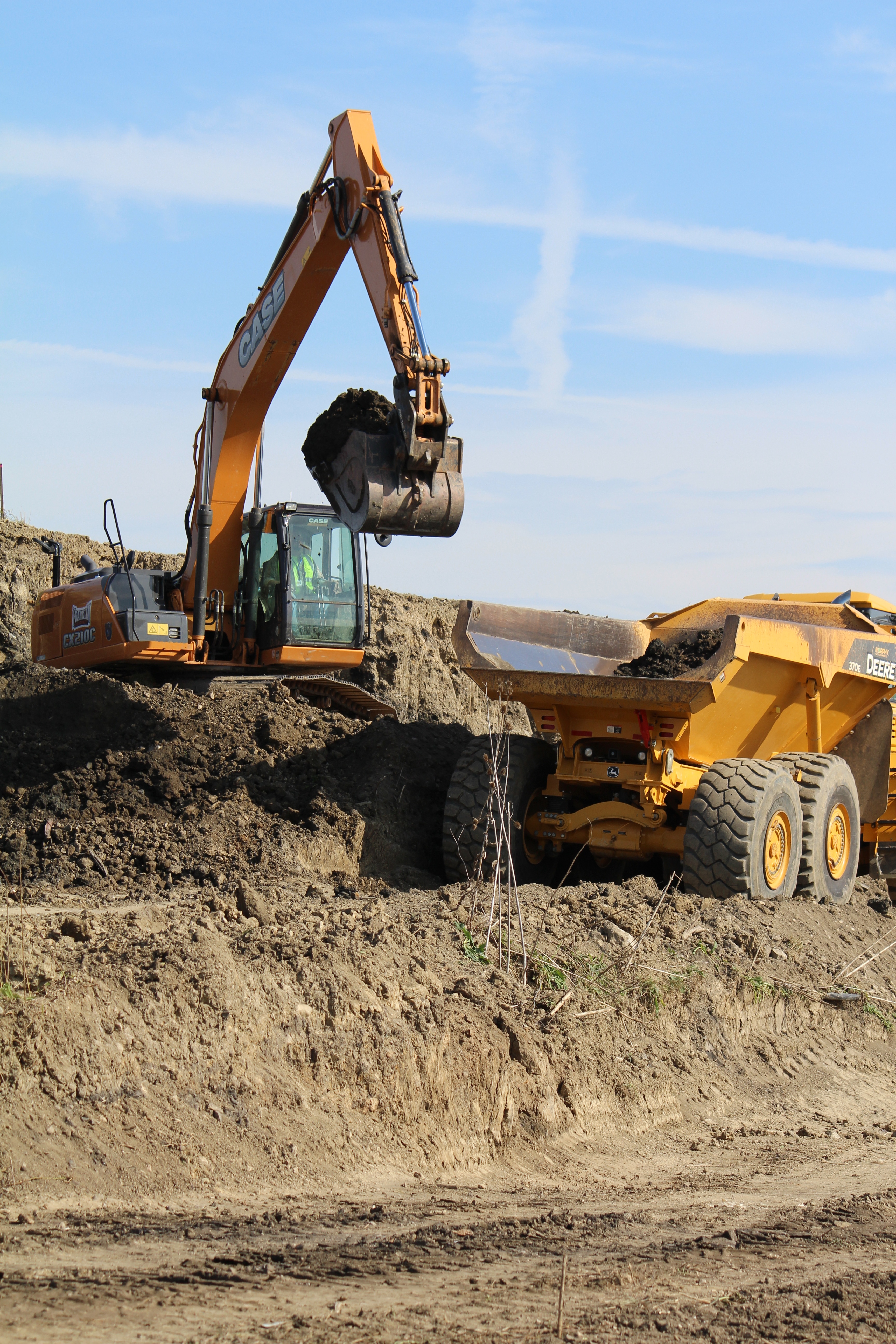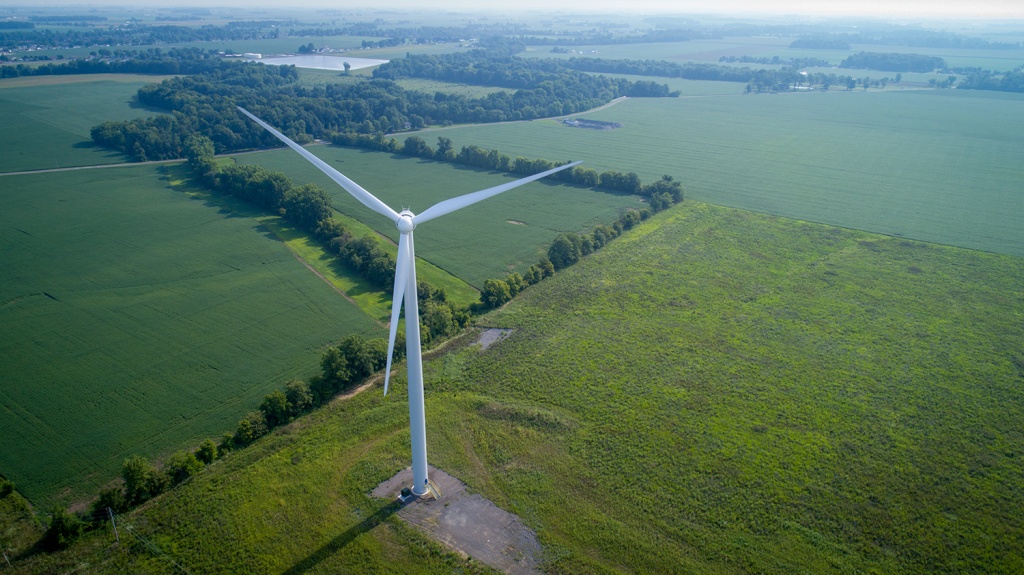SITE PATH
ONE POWER FEED

SUBSCRIBE
CONNECT WITH US
News Filters

In a recent Science Short, Jessica explained the difference between power and energy. Now that we understand what energy is, let’s catch up with Field Engineer Intern Eathan to explore two types of energy: potential and kinetic!
In this episode, we’ll cover the First Law of Thermodynamics, which states that energy is always constant – it can’t be created or destroyed. Then we’ll dive into the concepts of potential and kinetic energy, with real-life examples to demonstrate each.
Ready to learn more about these types of energy? Jump in via the video below. (And tune in to our next Science Short, when we’ll be discussing additional types of energy!)
And as always, you can subscribe to our YouTube channel to catch all future Science Shorts, and share this educational series on Facebook and Instagram!

It’s Friday! Time to talk timing ⏰
On Monday, we asked for your help scheduling One Energy’s construction timeline and determining our crews’ work rates. Think you found the right answers to make sure our linear construction model operates smoothly?
🔗Download the answers to Monday’s homework questions here.
And click here for a refresher on the questions.
This educational series can also be found on Facebook and Twitter!


You do KNOT want to miss today’s episode of Technician Talks!
On the last episode, we introduced figure 8 knots. Today, we’re talking bowline knots – and how One Energy uses them for different construction activities, such as wind turbine erection.
Learn how to tie a bowline knot from One Energy Technician Kerry, who demonstrates variations, including a basic bowline, a bowline with a backup, and a bowline tied to a structure.
Technician Talks can also be found on our LinkedIn, Facebook, and Twitter feeds– and be sure to subscribe to our You Tube channel for more One Energy content!

Learning styles are interesting things. While often discussed within the context of children in the classroom, the fact is that learning doesn’t (or shouldn’t!) end with graduation, and the distinction of learning styles shouldn’t be ignored in adulthood. To be honest, I was probably in my thirties before I fully understood how much of a visual learner I am. Once I figured that out, I stopped wasting time trying to understand things in a non-visual way. What’s interesting is that it was my journey as a parent, not as a professional, that taught me so much about learning in a professional setting.
My husband and I have four children and there is no doubt they all came from the same gene pool – they have so many similarities! But as each of them progressed through school, I learned that despite all their likenesses, they each had a unique learning style. My challenge as a parent was twofold. On the one hand, I had to help the kids understand how they each learn best and how they could adapt to instructors with different teaching styles, especially those who did not communicate in a way that was effective for that particular child. On the other hand, I had to try to explain to their teachers how diverse my kids were – to articulate how each child learned best, and that he might need something different than his older sibling. I eventually understood that the best students academically are usually those with multiple learning styles – they can learn from just about any teacher. And the mark of truly great teachers is their ability to teach effectively to many different learning styles, which often means teaching the same concept in several different ways.
In recent decades, successful organizations have come to understand the importance of bringing a diverse group of people together on a team. There is incredible value specifically from the differences in thought and the variety of experiences within that team. When we bring such variety to the table, we maximize the opportunity to examine more possibilities, talk through more options, and come to better solutions. Our brains are all wired differently. We process information differently. Our life experiences give us different perspectives. We all approach and solve problems differently. And in all likelihood, we learn differently, too.
Learning should never end in the classroom. For any organization to thrive, learning must be constant. Clearly, individual learning is critical, but the importance of learning from others and through others’ experiences cannot be overstated. (In many ways, it is exponentially faster as well.) Learning from and with those that learn differently than you do – be it in a conference room, a huddle room, or a boardroom – brings great value. When you are leading an organization or group, and you want to maximize the value of each individual, consider that the synergy of conversation, discussion, and even the occasional argument is where the richness of diverse learning styles, thoughts, and experiences shines through. A well-designed collaborative meeting can achieve the learning needs of the 65% of the population that are primarily visual learners and the 30% that are aural learners – and probably pick up the verbal learners and some kinesthetic learners, too.
The ability to accommodate different learning styles within your team and to maximize individual learning curves can dramatically expedite problem-solving, contributing to faster growth and increased profitability. To facilitate rapid learning among a diverse group is, in my opinion, one of the most significant characteristics of a great leader. I am incredibly thankful to my four kids for everything I learned about learning, as a parent, as an entrepreneur, and as an executive.
Anne Bain is the Head of Accounting at One Energy.

Welcome to the North Findlay Wind Campus (NFWC)! This is the headquarters for One Energy and as you can see, we have some of our Wind for Industry projects right in our backyard.
There are 10 turbines within a 1.25-mile radius of our headquarters – all supplying power to local manufacturers. And we even have some of the turbine elements incorporated throughout our building itself – whether it’s our carpets in the size and shape of a turbine foundation and a crane pad, or even our railings (shown here), which are threaded with the same steel cable that’s used inside our turbines!
One Energy’s headquarters were intentionally designed to educate visitors – the exterior and interior elements are not only functional – they help tell our story!

In an interview with The Courier’s Lou Wilin, One Energy CEO Jereme Kent discusses challenges the company has faced as well as its current status: “we’re back and we’re growing.”

In this week’s homework questions, we need your help scheduling our construction timeline!
To build Wind for Industry projects, One Energy uses what’s called a “linear construction model,” which means different crews are responsible for different stages of the construction process. Once one stage is completed, the next crew can begin their work on the following stage.
🔗Download today’s homework questions to help us figure out timing and construction rates! Then come back Friday for the answers.
This series is also available via Facebook and Twitter.


Hank Doster is exhausted from all his climbing.
From working at least 2 jobs at a time while attending school full time and traveling for film production projects, Hank believes he didn’t skip any steps on his climb to the top.
And now as Corporate Communications Manager at One Energy, he says it was all worth it. Watch to learn about his journey and what it’s like running the Storytelling department – for a company whose story is anything but typical!
Subscribe to our YouTube channel to keep up with the climbs!
This series can also be found on LinkedIn, Facebook, Instagram, and Twitter.

On Monday, we posted a Wind Study homework question explaining capacity factor and how One Energy uses that metric to determine a Wind for Industry site’s wind resource.
We asked for your help calculating the annual capacity factor for individual turbines and the site as a whole, as well as comparing sites to see which would have a higher capacity factor.
🔗 Download those homework questions here and check your work in the answers here!
And be sure to share this educational series on Facebook and Twitter!

One of the difficulties of running a business is finding an appropriate way to outfit your employees. While it is not a legal requirement to supply “ordinary clothing” for work – items like winter jackets, work uniforms, and rain gear, for example – expecting your workforce to spend thousands of dollars individually to comfortably complete their job is unreasonable.
State-mandated labor laws provide a framework for employers to follow when utilizing their workforce. If you are working in an industry with additional regulations, there are likely other guidelines your employer must consider (OSHA, MSHA, etc.). However, while many employers look to the law when determining how to outfit their employees, it can mean a lot to work for a company that takes care of its employees above and beyond the minimum requirements.
When it comes to construction, most workforces are expected to perform in all elements: rain, snow, sleet, wind, and very high or low temperatures. They need to be prepared for anything. Do they need fire-resistant clothing? Waterproof clothing? Insulated gloves? What do they need to bring themselves and what should be provided for them?
Basic PPE is an obvious requirement that employers must provide (hard hats, gloves, earplugs, masks, etc.). The pandemic makes it even more difficult, as no gear should be shared among groups of people without extensive sanitization protocols. All gear should be individualized and provided to employees to use for work purposes.
Even the “ordinary clothing” employers are not legally responsible for providing should be considered. Are these items things workers normally have and wear? I don’t know about you, but I do not casually wear lined Carhartt pants on the weekends, or a high-visibility rain jacket, or a fire-resistant long sleeve shirt to lounge around in at home. But at many companies, I would be responsible for equipping myself with (and paying for) those items. In total, my gear probably costs at least $5,000. This is not an instance where “business casual” will suffice. Here at One Energy, we believe that items required by an employer should be supplied by the employer.
Then there’s the issue of items that can provide additional comfort for workers when completing their job requirements – things like hand warmers, yak tracks, heated clothing, bandanas, etc. At One Energy, we believe these items should be provided at the employer’s discretion.
What we have regularly done at One Energy is trialed new gear with individuals who feel the item would be a value-add to the construction and operations groups. If it turns out to be a good addition, we will often buy the product for the entire team. This type of back-and-forth communication with crews is beneficial to both finding the best products available and maintaining a sense of well-being as a team. A comfortable workforce equals more productivity (when my fingers are numb, I am the slowest cable terminator of all time).
I recommend the following rules for employers in the construction industry who are outfitting their teams.
Outfitting rules of thumb as an employer, or the “New Minimum”:
- Buy and issue critical PPE to all employees.
- Buy your workforce everyday work uniforms.
- Buy your workforce “job required” gear.
- Determine if there are any specialized or unique items needed for specific work activities and stock that distinct PPE to be issued on an as-needed basis.
- Create a catalog of items that your workforce can choose from. Regularly update that catalog.
- Allow for your employees to demo new products that may be more comfortable for them.
- Set up an annual review of employee work attire and see what needs to be replaced and/or allocate a dollar value for replacement (for example, assuming 10% of my gear needs to be replaced every year, I would allocate a $500 budget to new gear).
The items noted above may seem obvious. Here is something that is not. I am a woman in construction. When I show up to work, I don’t put a power suit on, I put on a pot of coffee and my most durable gear for that day’s weather. I have also hired many women to work in construction, and finding quality gear to outfit them with has been perplexing. This industry is male-dominated, and it is PAINFULLY obvious. I regularly order men’s clothing for myself because I know they have a range of products that will work. For women in construction, there is a wide selection of pink hardhats, boot-cut jeans, and too-large-for-my-hands gloves, but comfortable and durable workwear for women is rare. What if there is a pregnant woman on your staff? I have recently investigated maternity workwear and came up with nothing. (On that note, if you read this and know of construction clothing or brands suited for women, please leave a comment!)
When industry standard doesn’t set the bar high enough, employers need to adjust. Workplace outfitting is one instance where that adjustment is straightforward and pays for itself. If a team is outfitted well, they look more professional, act more professional, and ultimately get more done.
Chelsea Bumb is the Head of Construction at One Energy.



